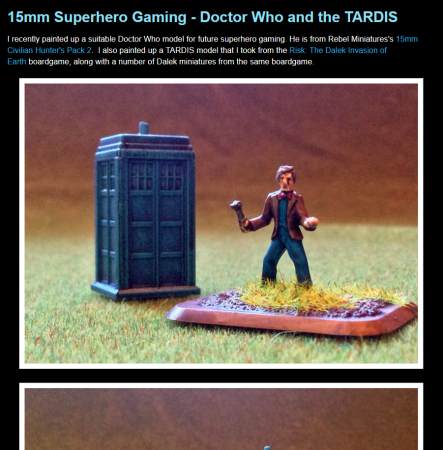I usually base my Flash Gordon miniatures on 40mm round 'premium' bases, as used by Privateer Press. However, with this miniature being a 'special', I have used a recycled Lord of the Rings hexagonal base (the 40mm-tall Lord of the Rings figures are sold as boxes of randomly packed plastic figures, three or four to a box, and are not the more familiar Games Workshop range).

I sanded the base of the Khang Robot to thin it down, and stuck it to the hexagonal base with superglue and accelerator.
Once the robot's legs were stuck down, I added a couple of small cork 'rocks' (cut from a champagne cork), once again glued down with superglue. The groundwork was built up with white DAS modelling clay over a coat of PVA white glue. I am not very particular about getting a smooth finish to the clay, preferring a rough finish.

Once the clay dried, I added some fine sand over PVA white glue in a 'Y' shape.
I once read in a military modelling article that adding a sand texture or static grass in this shape gives a more 'natural look', and ever since I have used this technique.
My next step was to add the torso, fixed at a slight angle (about 2 or 3 degrees to the right), with superglue. The head was added next, again at a slight angle, but this time attached with a superglue/greenstuff/superglue sandwich, which gave a very good bond and filled any gap.

The reason that I fix heads and bodies at an angle is again, following advice from military modellers - the angled or slightly turned head gives a more natural stance and pose. If you have never tried this, then it is worth an experiment!
If you study the base, you will see that I have added a small resin casting of a tube/tool, which I cut from a Games Workshop resin-basing kit. It was first cut from its base, glued down with superglue, then white glue and fine sand was added to hide the joins.
My cocktail for basing sand: I would not think of buying a bag of basing sand, but whenever I come across sand, grit or small stones, I pick up a selection. Not a lot - usually enough for a small herb or spice container. That, or ask family to bring me back a small bag of sand from their holidays - I have sand from Spain, Italy, the Sahara and Bulgaria, as well as sand I have picked up from building sites, golf-course bunkers and beaches. I sieve the sand and sort it by size, before placing a small amount of mixed sizes in a margarine container for when I need it. Add PVA white glue to the model base, hold it in the container, and shake! I think that this is a hang-over from the days that I built model railway layouts. A lot of the specialist magazines - especially the American ones - recommend this technique, which has served me very well.
You should also be able to see that the metal miniature has been 'polished'. More on this later, but the polishing was carried out with a green dish- or pot-scrubber stroked across the whole model.








